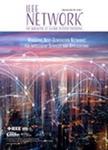版权所有:内蒙古大学图书馆 技术提供:维普资讯• 智图
内蒙古自治区呼和浩特市赛罕区大学西街235号 邮编: 010021

作者机构:Guangdong University of Technology School of Automation Guangzhou510006 China Nanyang Technological University College of Computing and Data Science Singapore639798 Singapore Singapore University of Technology and Design Pillar of Information Systems Technology and Design Singapore487372 Singapore University of Waterloo Department of Electrical and Computer Engineering WaterlooONN2L 3G1 Canada
出 版 物:《IEEE Network》 (IEEE Network)
年 卷 期:2024年
核心收录:
学科分类:0808[工学-电气工程] 08[工学] 0835[工学-软件工程] 0812[工学-计算机科学与技术(可授工学、理学学位)]
摘 要:Semantic Communication (SemCom) plays a pivotal role in 6G networks, offering a viable solution for future efficient communication. Through nonlinear mapping of semantic representations, Deep Learning (DL)-based semantic communications further enhance communication efficiency. However, the vulnerability of DL models to security threats, such as adversarial attacks, poses significant challenges for practical applications of SemCom systems. These vulnerabilities allow attackers to tamper with messages and eavesdrop on private information, especially in wireless communication scenarios. Although existing defenses attempt to address specific threats, they often fail to simultaneously handle multiple heterogeneous attacks. To overcome this limitation, we propose a novel Mixture-of-Experts (MoE)-based SemCom system, comprising a gating network and multiple experts, each specializing in different security challenges. The gating network adaptively selects suitable experts to counter heterogeneous attacks based on user-defined security requirements. Multiple experts collaborate to accomplish semantic communication tasks while meeting the security requirements of users. A case study in vehicular networks demonstrates the efficacy of the MoE-based SemCom system. Simulation results show that the proposed MoE-based SemCom system effectively mitigates concurrent heterogeneous attacks, with minimal impact on downstream task accuracy. © 1986-2012 IEEE.